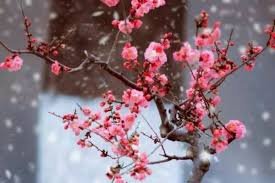Apr 3, 2024
Cherry Blossoms in Literature: Short Stories and Novels
Cherry blossoms, with their ephemeral beauty and symbolic resonance, have served as evocative motifs in literature, enriching short stories and novels with themes of love, loss, renewal, and the passage of time. Across cultures and genres, these iconic flowers have inspired writers to craft narratives that capture the essence of the human experience and the transient nature of life.

1. Symbolism and Imagery:
- Cherry blossoms symbolize a range of themes and emotions in literature, including beauty, transience, and the cycle of life and death. Their delicate petals and brief blooming period evoke a sense of fleetingness and impermanence, serving as poignant reminders of the fragility of existence.
- Writers use imagery of cherry blossoms to create vivid sensory experiences for readers, immersing them in scenes of natural beauty and contemplation. The blossoms’ ethereal quality and symbolic resonance add depth and resonance to literary narratives, enriching the reader’s understanding and emotional engagement.
2. Love and Romance:
- Cherry blossoms are often associated with themes of love and romance in literature, where they serve as symbols of affection, longing, and the promise of new beginnings. Writers use cherry blossoms to set romantic scenes and evoke feelings of tenderness and nostalgia.
- In novels and short stories, cherry blossoms may feature prominently in love stories, serving as a backdrop for romantic encounters or as symbols of enduring love and devotion between characters.
3. Loss and Grief:
- Cherry blossoms also evoke themes of loss and grief in literature, where they symbolize the fleeting nature of life and the inevitability of death. Writers use cherry blossoms to explore the pain of separation, the passage of time, and the acceptance of mortality.
- In novels and short stories, cherry blossoms may appear in scenes of mourning or remembrance, where characters reflect on the impermanence of life and find solace in the beauty and resilience of nature.
4. Renewal and Hope:
- Despite their association with transience and loss, cherry blossoms also embody themes of renewal and hope in literature. Writers use cherry blossoms to convey the idea of new beginnings, regeneration, and the promise of a brighter future.
- In novels and short stories, cherry blossoms may signal the arrival of spring, a season of growth and rejuvenation, or serve as symbols of resilience and optimism in the face of adversity.
5. Cultural Context:
- In Japanese literature, cherry blossoms hold particular significance as symbols of national identity, cultural heritage, and the beauty of Japanese aesthetics. Writers like Yukio Mishima and Haruki Murakami have explored the cultural and spiritual significance of cherry blossoms in their works, weaving themes of tradition, modernity, and existentialism into their narratives.
- In Western literature, cherry blossoms are often used to evoke a sense of exoticism, mystery, and romanticism, as writers draw inspiration from Japanese art and culture to enrich their storytelling.
Conclusion:
- Cherry blossoms have inspired writers across cultures and genres to craft literary works that explore themes of love, loss, renewal, and the human condition. Whether in Japanese haiku, Western novels, or global literature, cherry blossoms continue to captivate readers with their timeless beauty and profound symbolism, enriching literary narratives with layers of meaning and emotional resonance.